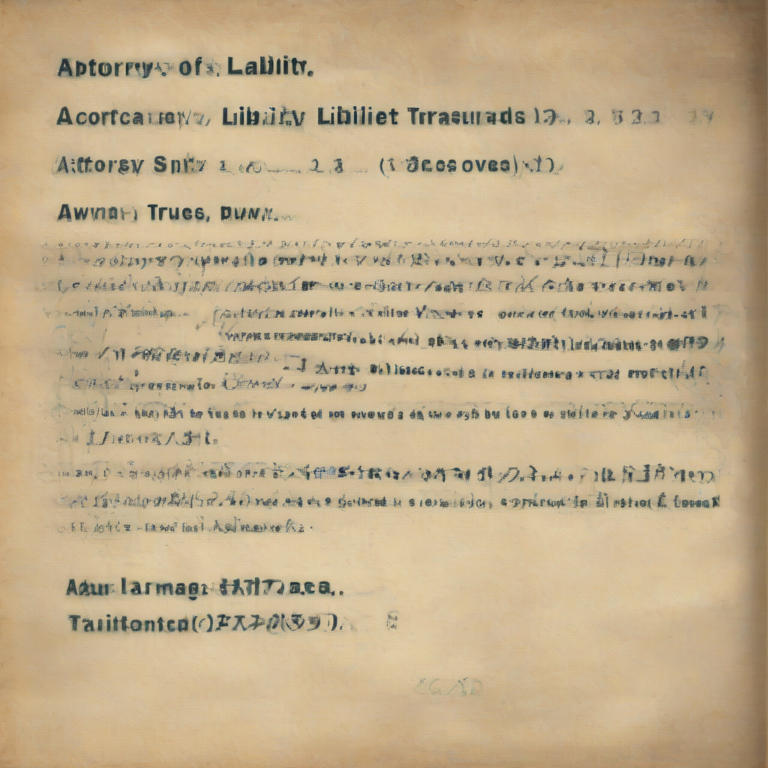
Navigating the Complexities of Attorney Product Liability: A Comprehensive Guide
Attorney product liability, a relatively nuanced area of legal responsibility, centers on the potential liability an attorney may face when their legal services, viewed as a “product,” cause harm to a client. Unlike traditional product liability involving tangible goods, this area deals with the intangible “product” of legal representation. Understanding the intricacies of this field is critical for both attorneys and their clients.
Defining Attorney Product Liability: Beyond Negligence
It’s crucial to distinguish attorney product liability from simple legal malpractice. While both involve attorney error leading to client harm, the core difference lies in the conceptualization of the attorney’s service. Legal malpractice typically focuses on the attorney’s breach of their duty of care—negligence in providing services. Attorney product liability, however, expands this concept, focusing on the “product” itself—the legal work, documents, advice, and strategies delivered—and whether defects in this product caused harm, regardless of whether the attorney acted negligently.
- Traditional Negligence: Focuses on the attorney’s conduct and failure to meet the standard of care expected of a reasonably competent attorney.
- Product Liability: Focuses on the inherent defects or flaws in the “product” of the attorney’s work, irrespective of the attorney’s intent or level of care. This might include drafting errors in a contract, failing to properly investigate a case, or providing flawed legal advice leading to demonstrable financial or other losses.
Types of Claims Under Attorney Product Liability
Claims under attorney product liability can encompass a broad spectrum of scenarios. These claims often arise when the attorney’s work contains defects leading to demonstrable client injury. Here are some examples:
- Defective Legal Documents: Errors in drafting wills, contracts, or other legal instruments, resulting in financial losses, property disputes, or other harm.
- Flawed Legal Advice: Providing incorrect or misleading legal advice that results in detrimental consequences for the client.
- Insufficient Investigation: Failing to adequately investigate a case, leading to a poor outcome or missed opportunities.
- Missed Deadlines: Neglecting crucial deadlines, leading to the loss of legal rights or claims.
- Failure to Properly Represent Client Interests: Failing to act in the best interests of the client, resulting in adverse outcomes.
Elements of a Successful Attorney Product Liability Claim
To successfully bring a claim against an attorney under a product liability theory, a plaintiff (the client) must generally demonstrate the following elements:
- The attorney provided a “product”: This refers to the tangible or intangible deliverables of the attorney’s services, such as legal documents, strategies, or advice.
- The product was defective: The product contained a flaw, error, or omission that rendered it unreasonably dangerous or unfit for its intended purpose.
- The defect caused harm to the plaintiff: The plaintiff must demonstrate a direct causal link between the defect in the attorney’s work and the resulting damages.
- The plaintiff suffered damages: The plaintiff must show concrete financial, emotional, or other losses as a direct result of the defect.
Defenses Available to Attorneys in Product Liability Claims
Attorneys facing product liability claims have several potential defenses they can employ. These defenses aim to challenge one or more of the elements necessary to prove liability:
- Lack of Defect: Arguing that the attorney’s work was not defective, and any negative outcomes resulted from factors outside the attorney’s control.
- No Causation: Demonstrating that there was no direct causal link between the alleged defect in the attorney’s work and the plaintiff’s damages.
- Assumption of Risk: Arguing that the plaintiff was aware of the risks associated with the attorney’s services and voluntarily assumed those risks.
- Comparative Negligence: Arguing that the plaintiff’s own actions contributed to their damages.
- Statute of Limitations: Raising the defense that the claim was filed after the applicable statute of limitations has expired.
- Contributory Negligence: Similar to comparative negligence, but arguing that the plaintiff’s actions were the sole cause of their damages.
Jurisdictional Variations and the Role of Legal Ethics
The application and interpretation of attorney product liability principles can vary significantly across different jurisdictions. Some jurisdictions may be more receptive to such claims than others. Furthermore, ethical considerations play a crucial role. While product liability focuses on the product’s defects, legal ethics standards govern attorney conduct, including diligence, competence, and client communication. Breaches of these ethical rules often intersect with product liability claims, potentially leading to disciplinary actions or even disbarment in addition to civil liability.
- State-Specific Laws: The specific laws and precedents governing attorney product liability differ widely from state to state.
- Ethical Rules and Disciplinary Proceedings: Disciplinary actions from bar associations can result from actions that fall under both attorney product liability and legal ethics violations.
Insurance and Risk Management for Attorneys
Given the potential for significant liability, attorneys must have adequate professional liability insurance (also known as malpractice insurance). This insurance protects attorneys from financial losses resulting from claims of negligence or product liability. Beyond insurance, proactive risk management is crucial. This includes:
- Thorough Due Diligence: Conducting comprehensive investigations and due diligence before undertaking any legal representation.
- Clear Communication with Clients: Maintaining open and clear communication with clients regarding the scope of representation, potential risks, and progress of the case.
- Documentation of Actions: Meticulously documenting all actions, decisions, and communications related to a case.
- Regular Review of Procedures: Regularly reviewing and updating internal procedures to minimize the risk of errors or omissions.
- Continuing Legal Education: Staying abreast of legal developments and best practices through continuous learning and professional development.
Conclusion (Omitted as per instructions)






